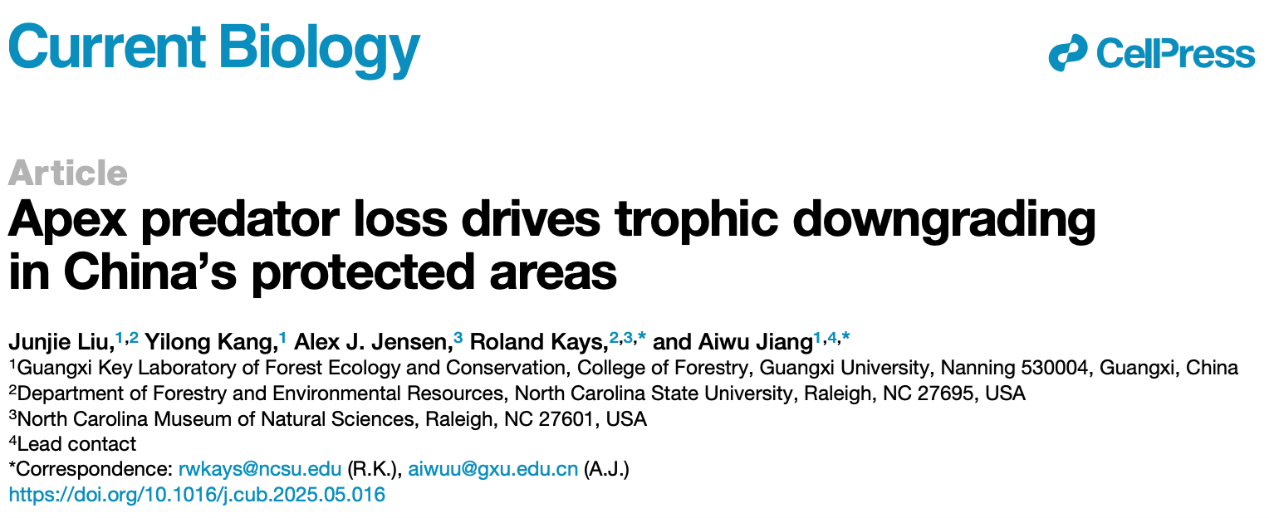Recently, the research team led by Professor Jiang Aiwu from the School of Forestry of Guangxi University has made new progress in the field of China's protected areas research. The achievement was published in the renowned biology journal CURRENT BIOLOGY under the title "Apex predator loss drives trophic downgrading in China's protected areas". The first author of the paper is Liu Junjie, a 2022 ecology doctoral student from the School of Forestry . GXU Professor Jiang Aiwu and Professor Roland Kays from North Carolina State University serve as co-corresponding authors, with GXU listed as the first affiliation.

Establishing protected areas (PAs) is a core strategy for global biodiversity conservation. Currently, there is a lack of systematic evaluation of their effectiveness in mitigating species loss and maintaining the integrity of food web structures. This study integrated published infrared camera monitoring data (2010-2022) nationwide to systematically assess the effectiveness of China's PAs in protecting wild animal communities and maintaining food webs. The research found that the larger the area of a PA, the less species loss it experiences, but high population density around its periphery significantly weakens its protective effect. Analyses showed that approximately 76% of medium to large carnivorous species (such as tigers and leopards) were not recorded by infrared cameras in more than half of the PAs within their historical distribution areas. The loss of these medium to large carnivores is not merely a simple reduction in species, but rather, the absence of highly connected species in the food web triggers a "trophic cascade effect", leading to the simplification of food web structures.
It is reported that this study provides key scientific evidence for the optimized management of global protected areas, is of great significance for achieving the global conservation target, and was funded by the China Scholarship Council.